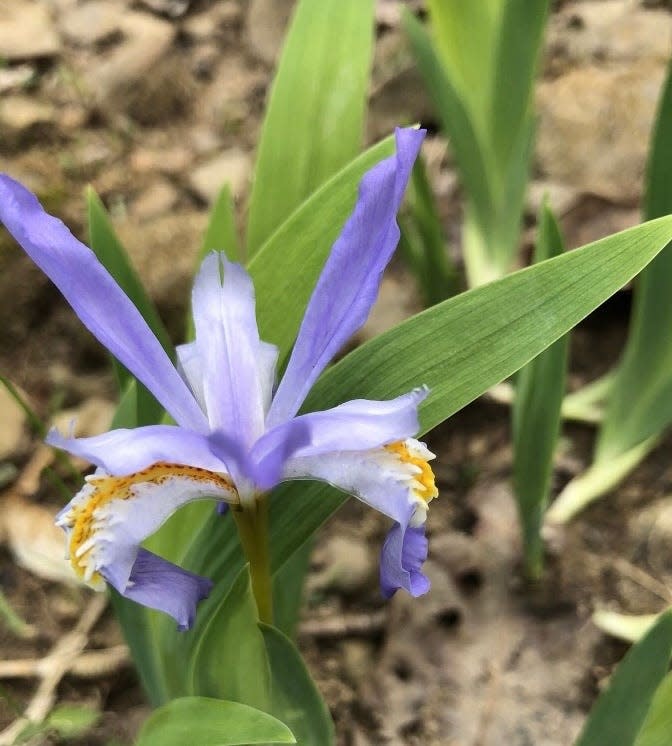Hiker's Path: A lesson in history on the Lick Creek Trail
The Underground Railroad consisted of a large secret network of travel routes and safe havens for freedom seekers escaping slavery. The Ohio River divided freedom and enslavement along several border states, including Indiana.
Located north of the Kentucky border, the Lick Creek Settlement was a mixed community mostly of free African Americans and Quakers. Located in what is now a part of the Hoosier National Forest, it was thought to be an important component of the Underground Railroad.
It was originally settled in 1811 by Jonathan Lindley, a Quaker, and 11 families from North Carolina.
By the 1860s, the population of African Americans in the area was at about 260 and encompassed over 1000 acres. This influx of free African Americans and Quakers, and the influence of the African Methodist Episcopal Church point to involvement with the Underground Railroad.
The settlement continued to grow in the mid-nineteenth century. However, after the Civil War, African Americans started to leave Lick Creek. Although their departure remains somewhat of a mystery, most probably headed north to industrial jobs. By 1911, there were no longer any African Americans residing in Lick Creek.
A seven-mile hiking trail passes through this early 19th-century settlement. Only a family cemetery and traces of homesites remain. The trail, also used for horses and mountain bike riding, passes through some of the most scenic hardwood forests of the Hoosier National Forest in Southern Indiana.
There are two trailheads to reach this trail: the west one south of Paoli off of State Highway 37, and the north one, south of Paoli off of U.S. Highway 150.
The trail is a loop trail and is considered challenging to hike. It takes 3-6 hrs to hike the trail.

This is a trail you will either love or hate. It’s known to be muddy at times because it’s shared with horses. And in the summer it’s a trail that is known for having a lot of ticks. So I recommend hiking it in Spring, Fall, or Winter. And don’t hike it during a rainy season. The trail has lots of elevation changes that make it challenging. The good things about it include the history of the land, the beautiful forest that you get to hike through, and the beautiful wildflowers in the Spring. Fall has its own benefits as well.
I chose a Spring hike. Yeah, mud was a factor. I did not hike the whole trail but did enough to get a feel for the place.
There’s a map at the trailhead that shows the location of the cemetery. And a sign as well along the trail. It’s a long hike in for sure.
I wanted to find the cemetery and explore the history that I would find there. I read the background history of the pioneer settlement. It’s more history than can be fit into the space of this column. But I felt it significant enough to write about and to explore the area.
The day I was there was a beautiful spring day. It was partly cloudy overhead and the forest was greening up. Wildflowers were appearing. I was lucky enough to find some wild Irises that I thought could have originated from the early pioneers. Whether true or not, it was fun to imagine it that way as it added a personal touch to the land. The flowers were gorgeous.
I spent some time walking through these beautiful old woods. Just thinking about the history of where I was walking gave a solemn feel to the place. I love hiking in the Hoosier National Forest. It feels like wilderness to me and reminds me of what the pioneers might have seen.
It was a quiet and contemplative walk. I saw and heard lots of birds including pileated woodpeckers. There were Redbud trees in bloom along the sides of the trail and wildflowers along the path.
The trail ran up and down lots if hills but they weren’t steep. I passed by areas full of Pine trees and many hardwoods.
The old cemetery is called the “Thomas and Roberts” family cemetery. It’s off the trail a little but there are signs pointing to the direction where it’s located. There are still old stones there dating back to the mid 1800s. If you are a history buff, this is the trail for you.
The Hoosier National Forest contains over 200,000 acres and over 260 miles of hiking trails throughout the southern half of the state.
I had a good hike at this place though I did not get to see the whole area. I am not sure what I expected, but I believe I got a whole lot more out of this place. I learned more about Indiana’s pioneer history. Never too old to learn.
This trail was on my bucket list of places that I wanted to hike. I will be going back and next time, I will bring a friend along for company. There are so many wonderful places to explore in our beautiful state. Hope you get the chance to get out and visit some of Indiana’s trails. Happy Hiking!
To get to this place:
West trailhead, Take State Highway 37 south of Paoli for 5.3 miles. Turn left onto County Road 450 South. Drive one mile to parking lot at trailhead. North trailhead, Take US 150 South south of Paoli for 4 miles. Turn right onto County Road 250 South. Drive two miles to trailhead.
A quote for your week: “We were the people who were not in the papers. We lived in the blank, white spaces at the edge of the print. It gave us more freedom. We lived in the gaps between the stories”. - Margaret Atwood - Canadian Novelist, Teacher, Environmental Activist.
Until the next trail,
Susan
This article originally appeared on Evening World: Hiker's Path: A lesson in history on the Lick Creek Trail

